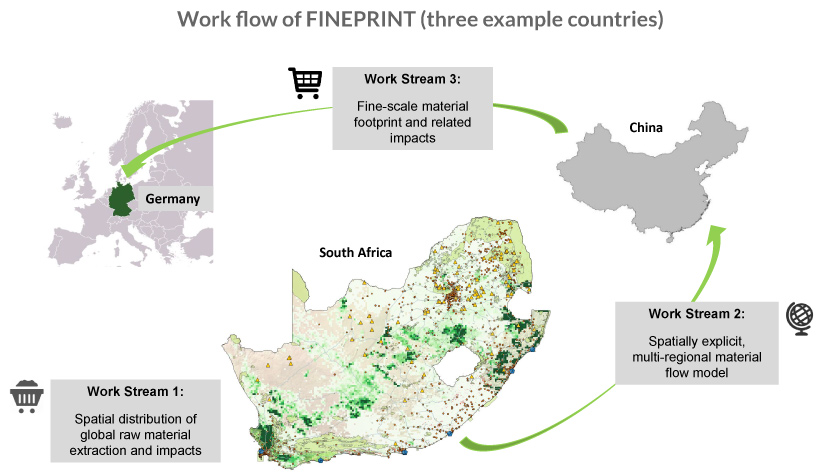Impacts all over the world
In today’s globalised world, our consumption of products and services causes environmental and social impacts all over the world. Many of the impacts relate to the extraction of raw materials, such as deforestation in tropical regions, increased water scarcity due to irrigation or violent conflicts related to mining activities.
We urgently need to reduce the global impacts of our raw material use and to establish a sustainable economy and lifestyles that respect the planetary boundaries. To achieve this, detailed knowledge on the various impacts of specific consumption areas, supply chains and raw materials is required.
Current models used to trace material flows and related impacts along international supply chains and to calculate consumption-based (footprint-type) indicators mostly operate on the national level. But environmental and social conditions vary significantly over time and space. In order to reflect these differences, models need to move from the national to a much more detailed spatial level.
There is an urgent need to transform our production and consumption patterns and reduce our global impacts
Moving material flow and footprint analysis from the national to the spatially explicit level
The objective of FINEPRINT is to advance current footprint models through developing a
new method for assessing global material flows using high geographical resolution.
With this new method, we perform spatially explicit analyses of worldwide raw material flows
embodied in products and services and assess the associated environmental and social impacts around the globe.
A major step forward in material footprint modelling

From extraction to consumption
FINEPRINT will be implemented by means of three work streams.





